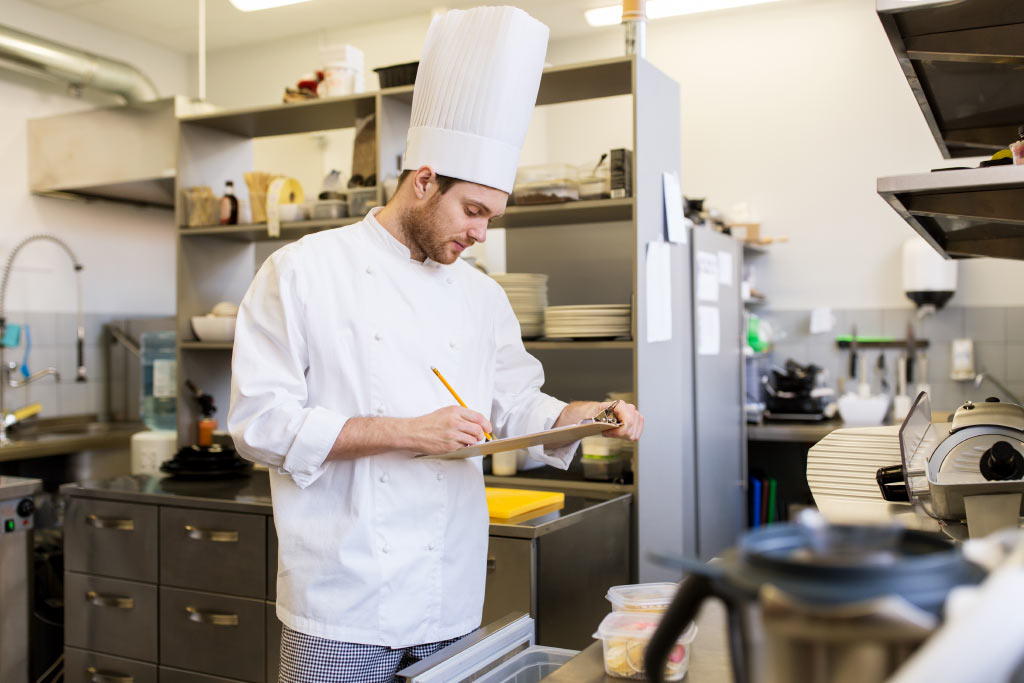5 Common Food Safety Mistakes and How to Avoid Them

Following HACCP food safety regulations is essential in ensuring that the food you serve to your customers is both safe and consistently high quality, as well as fundamental in legally protecting your business with accurate records. As we work with a number of businesses in the food service industry, we see the same mistakes cropping up time and again. Here are some common food safety errors we’ve seen and how to avoid them.

Testing a thermometer’s accuracy with an improperly made ice bath
When ice is floating in a container of water, the temperature difference between the water at the top and bottom of the container can be as much as 12°C. In a properly made ice bath, the ice should be resting on the bottom of the container and the water level at the top should be slightly below the ice level. When performing your test you should stir the mixture and let it sit for a minute before stirring the thermometer, and if the test has been carried out correctly, and your infrared thermometer is properly calibrated, it should read within your unit’s stated accuracy specification at 0.0°C.
Read our step-by-step guide to carrying out an ice bath test here.

Using an infrared thermometer to test internal temperatures
Infrared thermometers only measure the surface temperature of an object. Therefore you cannot use an infrared thermometer to check that any food is a safe temperature throughout. This is because the centre of the food will cook and cool at a different rate to the surface.
For an accurate reading of your food, use a penetration-probe thermometer (such as the Food Check or Thermapen) that you can insert into the centre of the food.
Learn more about the limitations of infrared thermometers here.

Failing to stir foods before measuring their temperature
Differences in temperature within the same medium are called “gradients.” Gradients exist in ovens, fridges and solid foods like vegetables and chicken. The same is true with liquids and semi-liquids like salsa and soup. Whether they are cooking or chilling, different parts of foods heat up and cool down at different rates. If you insert a probe thermometer into a liquid that has been sitting all morning, before stirring, you may be measuring the temperature of a cold spot or a hot spot and you’ll never know which.
For an accurate reading of a liquid or semi-liquid, stir the mixture thoroughly before measuring its temperature as this will even out the gradients and bring it to a more even temperature. It’s also beneficial to stir your thermometer probe in the food while you take its temperature.

Failing to measure the correct part of a food
Because of temperature gradients, you need to measure the centre or thickest part of a solid food with your thermometer. This can be a challenge with dial thermometers (whose sensor is up to two inches long) or slow digital thermometers (that take more than 5 seconds to reach an accurate reading). But with a fast and accurate digital thermometer, you can locate the centre by pushing the probe through the food until you find the lowest number when cooking, or the highest number when cooling.
Another common mistake is resting a probe tip on the bottom of a pan or container of food rather than suspending it in the middle of a liquid. Even if the liquid has been properly stirred, the temperature of the pan can affect the reading of a probe resting on its surface.
Learn more about taking accurate readings here.

Using paper HACCP logs when so many digital solutions are available
Keeping paper HACCP logs are time-consuming to fill out, difficult to navigate, and both inconvenient and unreliable to store. We stock a number of data loggers, such as the Saf-T-Log, that erase the need for paper log books while providing a clear, accurate and reliable data archive.
With our ThermaData WiFi Loggers, for example, temperatures will automatically be taken at programmed intervals and transmitted to your device worldwide, so that corrective actions can be carried out immediately wherever you are.
Shop our data loggers here.
[imacPrestashop_products products=”1218,1035,1052″ language=”1″]